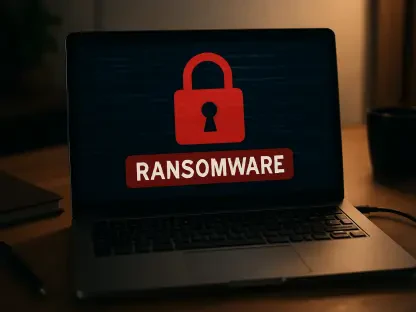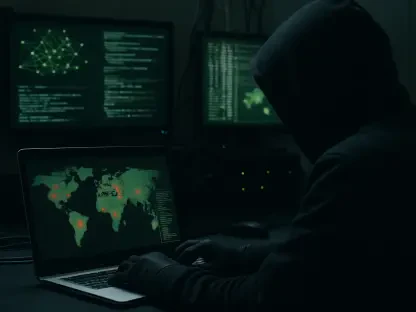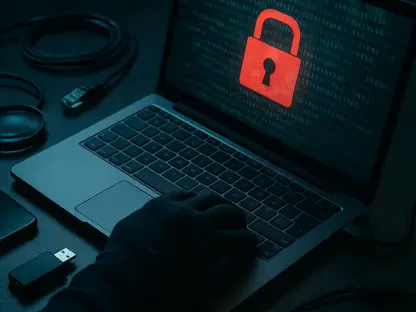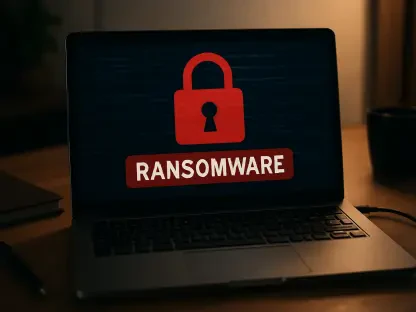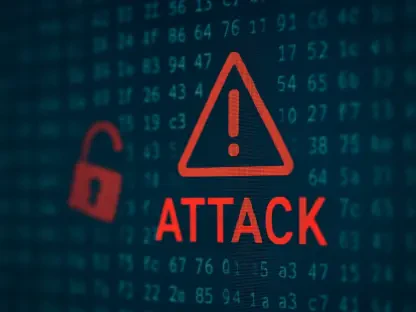Setting the Stage for a Digital Battlefield
In an era where industrial giants fuel the backbone of global economies, a staggering statistic emerges: ransomware attacks have surged, with proceeds exceeding $1 billion annually across critical sectors, highlighting the urgent need for robust cybersecurity. One such incident struck LG Energy Solution, a South Korea-based battery manufacturing titan with $17.5 billion in revenue, supplying power to major car makers. This cyberattack, targeting a specific overseas facility, exposed vulnerabilities in an industry pivotal to automotive and energy advancements, raising urgent questions about the security of digital infrastructure in manufacturing. What happens when technology meant to drive progress becomes a gateway for disruption?
The attack on LG Energy Solution underscores a chilling reality: no sector is immune to the evolving tactics of cybercriminals. While the company’s headquarters and other locations remained unscathed, the breach at a single facility temporarily disrupted operations, spotlighting the fragility of localized systems. This incident serves as a lens to examine not just the technology under attack, but the broader cybersecurity frameworks—or lack thereof—that protect critical industries from digital threats.
Analyzing the Ransomware Technology and Its Impact
The Mechanics of the Attack and LG Energy’s Response
Ransomware, a malicious software designed to encrypt data and demand payment for decryption, represents a formidable weapon in the cybercriminal arsenal. In the case of LG Energy Solution, the attack zeroed in on an overseas facility, exploiting vulnerabilities in its network to hold systems hostage. The company swiftly confirmed the breach, initiating recovery protocols that restored normal operations at the affected site, a testament to rapid response capabilities despite the severity of the intrusion.
Beyond immediate recovery, LG Energy Solution embarked on comprehensive security operations and investigations to prevent future incidents. However, the reluctance to disclose specifics about the attack highlights a common challenge in cybersecurity: balancing transparency with the risk of exposing further weaknesses. This opacity, while protective, limits industry-wide learning from such breaches, leaving other manufacturers potentially unprepared for similar threats.
The Akira Ransomware Gang’s Role and Capabilities
Central to this incident is the Akira ransomware gang, a group that claimed responsibility by listing LG Energy Solution on its leak site. Their assertion of stealing 1.7 terabytes of sensitive data, including corporate documents and employee information, points to the sophisticated nature of their technology, capable of infiltrating and exfiltrating massive datasets. This breach not only threatens the company’s operational integrity but also risks exposing proprietary and personal information to malicious exploitation.
The Akira gang’s activities align with a broader pattern of targeting critical industries, as evidenced by an FBI advisory noting their reported proceeds of over $244 million. Their ability to disrupt essential systems showcases ransomware as a dual-threat technology: it halts operations through encryption and leverages stolen data for extortion. Such capabilities underscore the urgent need for industrial tech to evolve beyond traditional defenses toward more dynamic, proactive solutions.
Performance of Current Cybersecurity Measures in Industry
Rising Threats to Battery Manufacturers
Battery manufacturers like LG Energy Solution have emerged as prime targets due to their critical role in powering automotive and energy sectors. The technology driving these industries—high-capacity batteries and complex production systems—relies on interconnected digital networks that, while efficient, offer multiple entry points for cyberattacks. A parallel incident involved German manufacturer Varta AG, which suffered weeks of downtime from a cyberattack, illustrating the cascading effects of such disruptions on supply chains.
Another alarming case in the sector saw hackers siphon $60 million from a major battery materials supplier, highlighting financial motives alongside operational sabotage. These examples reveal a performance gap in current cybersecurity technologies, which often lag behind the adaptive strategies of ransomware groups. The stakes are high, as any downtime or data loss in this industry can ripple through global markets, delaying innovations in electric vehicles and renewable energy.
Systemic Risks and Industry Vulnerabilities
The performance of cybersecurity in industrial settings faces systemic challenges, particularly in defending against sophisticated ransomware operations. As FBI Cyber Division Assistant Director Brett Leatherman noted, these attacks cause severe disruptions across essential systems in manufacturing, healthcare, and education. The technology protecting these sectors often struggles to keep pace with the evolving tactics of cybercriminals, who exploit both technical and human vulnerabilities.
For battery manufacturers, the risks extend beyond individual companies to encompass vital supply chains. A single breach can halt production, delay shipments, and inflate costs, affecting downstream industries reliant on timely delivery. This interconnectedness amplifies the need for robust, scalable cybersecurity solutions that can predict and mitigate threats before they materialize, rather than merely responding to breaches after the fact.
Looking Ahead: Strengthening Defenses Against Digital Threats
Reflecting on the ransomware attack at LG Energy Solution, it became clear that while the company managed a commendable recovery, the incident exposed deeper vulnerabilities within industrial tech sectors. The involvement of the Akira gang, with their advanced data theft and encryption capabilities, served as a stark reminder of the relentless innovation in cybercrime. The broader trend of targeting battery manufacturers further highlighted how critical infrastructure has become a battleground for financial and operational disruption.
Moving forward, actionable steps emerged as essential for fortifying defenses. Industry players need to invest in next-generation cybersecurity technologies, such as AI-driven threat detection and zero-trust architectures, to anticipate attacks rather than react to them. Collaboration between companies, governments, and cybersecurity experts also stands out as a vital strategy to share intelligence and develop standardized protocols against ransomware threats.
Finally, a long-term consideration crystallized: regulatory frameworks must evolve to enforce stricter cybersecurity standards across critical sectors. Initiatives starting from 2025 onward could focus on incentivizing proactive measures through grants or penalties for non-compliance, ensuring that industrial innovation does not outpace security. These steps, if implemented decisively, offer a pathway to safeguard not just individual companies, but the stability of global supply chains against the ever-looming shadow of digital adversaries.



